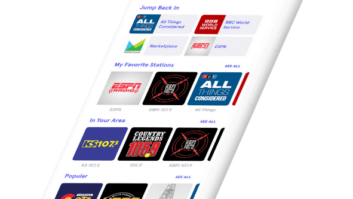(click thumbnail)
A recent study of Internet audio stream listeners, “Successful Audio Streaming Strategies,” completed by media research firm Coleman Insights, had a number of interesting takes for radio broadcasters.
Their “takeaway” is that about half of “streamers” — self-described Internet audio/radio listeners — no longer listen to terrestrial signals, but that they have not given up on radio brands.
“Without looking beneath the surface, these findings could be a bit startling to traditional broadcasters who might jump to the conclusion that nearly half of the 17% of Americans who are streaming have abandoned their brands,” the authors wrote.
(click thumbnail)
“These findings do not, however, support that conclusion. Rather, a change in delivery method may be what is happening here, as many of these streamers who no longer use broadcast signals continue to listen to AM/FM content via streaming.
“Streamers who no longer listen to ‘over the air’ broadcasts do not hate radio. They share the same moderately positive attitude toward the medium as other streamers. They simply have gravitated toward a different delivery method.”
The study noted that early adopters “may or may not represent the future profile of streaming consumers. As audio streaming becomes more prevalent, the industry should continue to monitor the percentage of streamers who no longer use terrestrial radio signals. Will the next wave of streaming adopters share the same proclivity toward streaming, or will they continue to listen to ‘over the air’ signals at a higher rate?”
(click thumbnail)
Those consumers who like the style of terrestrial radio perhaps will not mimic early adopters “and may end up listening to terrestrial radio signals or streams at a higher rate than the early streaming adopters,” they continued.
“As more Americans stream, it will be important to understand whether these new streamers migrate to AM/FM streams at the same rate as the first wave of adopters, or at a higher or lower rate. It will also be important to examine the similarities and differences in the needs of broadcast users and non-users going forward, to determine whether broadcasters and streamers should modify their programming offerings to serve these different audiences.
The study (PDF) was based on the responses of 1,300 self-described Internet audio/radio listeners (five minutes or more per week) and conducted during the second and third quarters of 2010.














